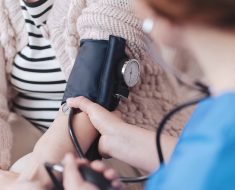An estimated 41% of Americans don’t get enough vitamin D, which can lead to consequences like osteoporosis, an increased risk of falls, and fractures. Vitamin D deficiency is especially a concern among the elderly. Interestingly, vitamin D is also believed to be important to the immune system and health, and may impact your risk for breast cancer.
But, how do you tell if you have enough vitamin D? And how much is too much? Here’s what you need to know.
How do you know if you are vitamin D deficient?
A simple blood test with your primary care doctor will tell you if you are vitamin D deficient. The test measures your 25-hydroxy vitamin D levels. If you’re not getting enough vitamin D, you might be insufficient or deficient. Insufficiency means you have vitamin D levels less than 30 ng/mL. Official deficiency is defined as vitamin D levels of less than 20 ng/mL.
Why are we deficient in vitamin D?
Changes in milk intake, an increased use of sun protection, and higher rates of obesity have accounted for more cases of vitamin D deficiency in adults today.
Do we know that replacing vitamin D will help us?
Yes. Well, sort of.
Vitamin D is a hormone we need to absorb calcium and phosphorus from our diets, and calcium and phosphorus are minerals critical to bone health. Without vitamin D, you may experience muscle weakness and an increased risk of falls and fractures. In many clinical trials, vitamin D supplementation to achieve 25-hydroxy vitamin D levels of 28 – 40 ng/mL lowered fracture risk.
Vitamin D deficiency may increase your risk of heart disease and certain cancers. However, there is limited scientific data to suggest that supplementation beyond daily recommended amounts is required or helpful.
Can my vitamin D level get too high?
Though there doesn’t appear to be any toxicity associated with recommended levels of vitamin D supplementation, there are concerns when blood levels of 25-hydroxy vitamin D go above 50 ng/mL. I rarely see a patient’s levels go above 50 ng/mL, and I’ve been in private practice for more than 10 years. Ideally, you want to maintain your vitamin D levels between 30 – 50 ng/mL.
So how much vitamin D do you need?
This is highly debated, but we appear to be settling on a consensus. The best way to get vitamin D is through exposure to sunlight. In order to get enough, you should get at least 20 – 30 minutes of exposure to sunlight everyday, so your skin can make vitamin D naturally.
You can also think about getting vitamin D through your diet, which will mainly happen with vitamin D-fortified dairy products. Many supplements also come with vitamin D.
The recommended dietary allowance (RDA) of vitamin D for adults through age 70 is 600 IU, with the RDA increasing to 800 IU above age 70.
You will need more if you:
- live in a sun deficient state
- are dark skinned
- consistently use sunscreen
- are obese
- take medications that accelerate how quickly you process vitamin D (such as phenytoin)
- have a condition and impairs vitamin D absorption from your gut (like inflammatory bowel disease or celiac disease)
What supplements do I need to take to get my 25-hydroxy vitamin D levels above 30 ng/mL?
Vitamin D supplements are available as vitamin D2 or vitamin D3, both of which can be used if you don’t get enough vitamin D already. Studies suggest that vitamin D3 increases vitamin D levels faster than vitamin D2 does, especially at higher doses. This is why I recommend vitamin D3 supplements. Vitamin D3 is available in 400 IU, 800 IU, 1000 IU, 2000 IU, 5000 IU, 10,000 IU, and 50,000 IU capsules. 50,000 IU capsules are available by prescription only.
If your blood levels are exceptionally low, you may need higher doses that should be used under the direction of a healthcare provider. In patients with vitamin D levels less than 20 ng/mL, start with 50,000 IUs of vitamin D3 once a week for 6 – 8 weeks. After that, a dose of 800 – 2000 IU per day should be taken to maintain vitamin D levels above 30 ng/mL.
After taking vitamin D supplements for 3 – 4 months, have your levels rechecked to ensure you are on the right track. As always, talk to your doctor or pharmacist if you have any questions. And don’t forget to get a healthy dose of sunlight this spring!
Dr O.
Source: Read Full Article





